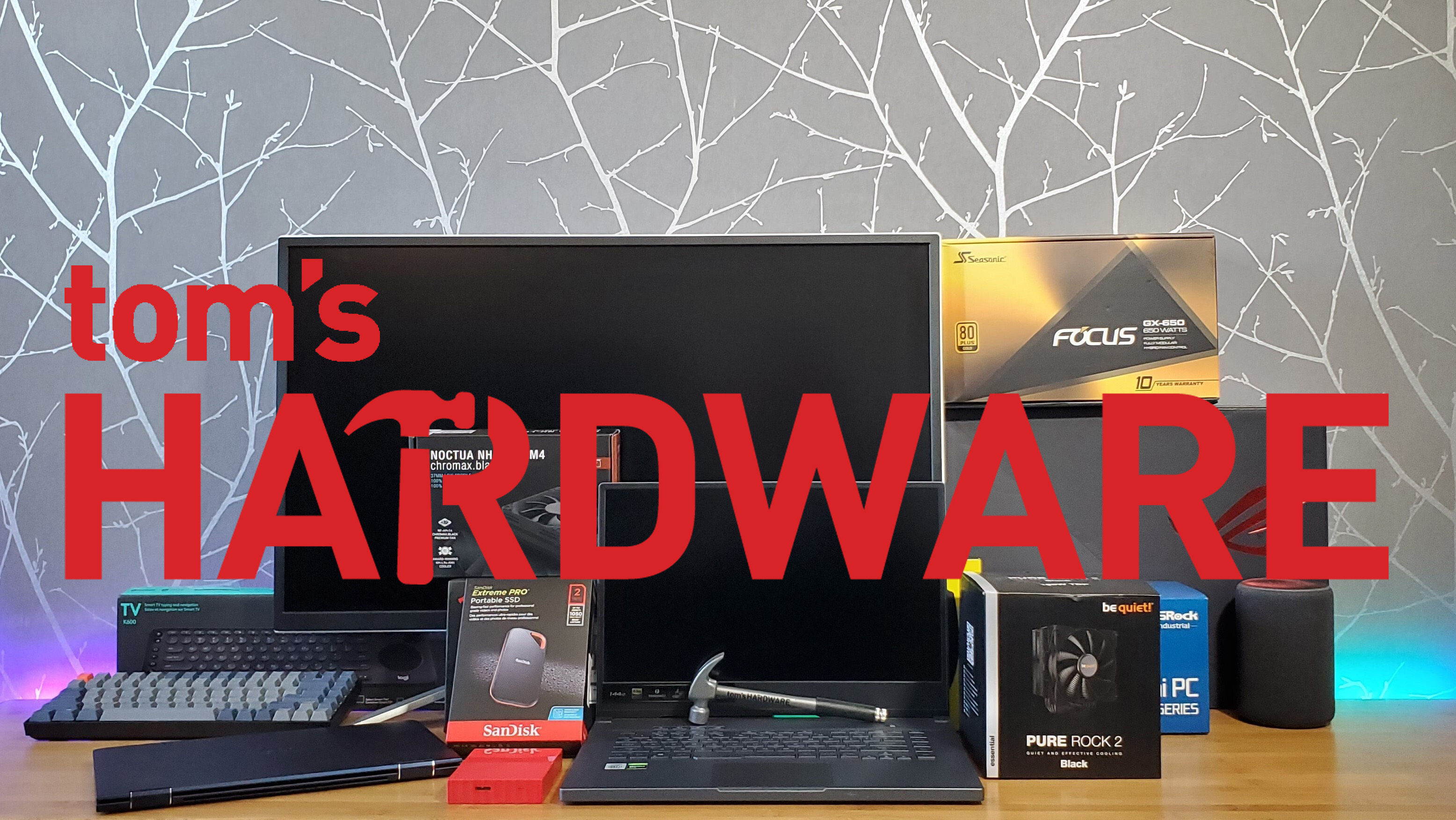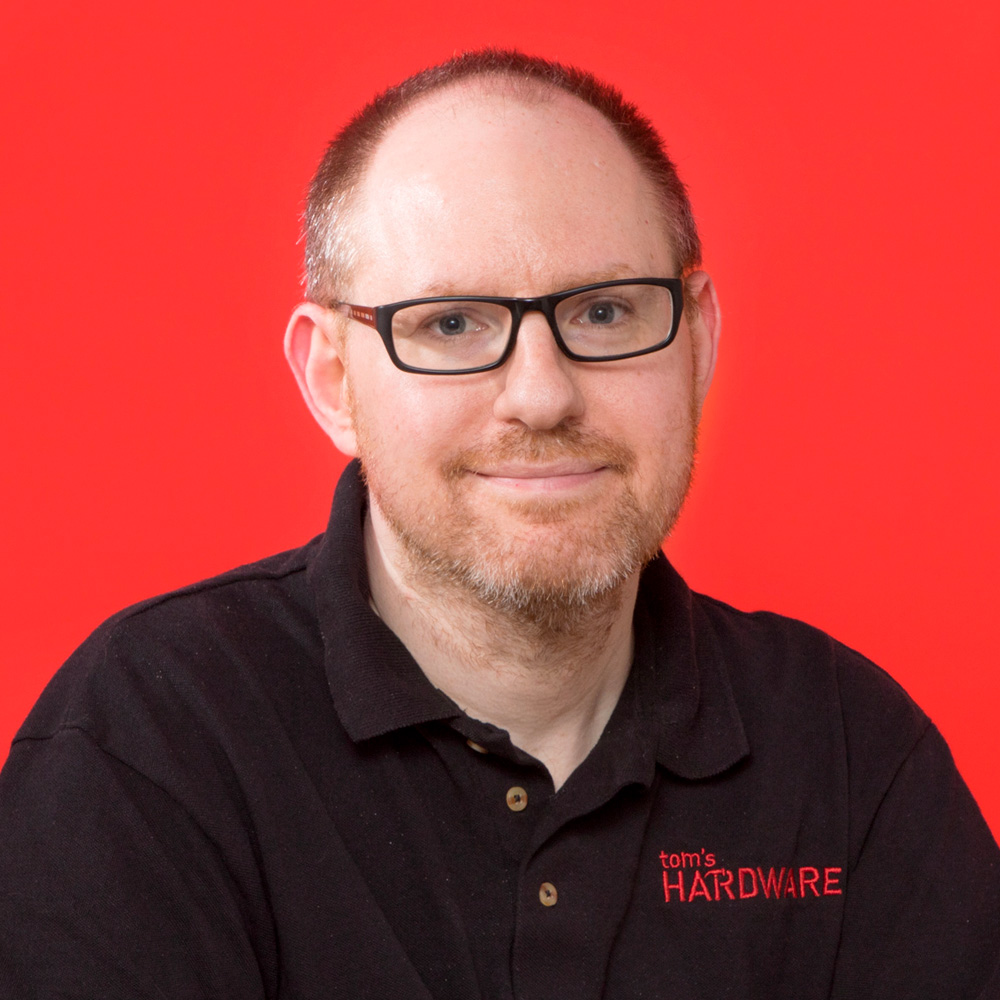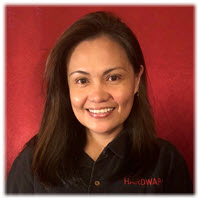About Tom’s Hardware: Our Staff, Ratings and History
Helping you make the most of computer hardware since 1996.

Our Mission
Tom's Hardware is the leading destination for tech enthusiasts of all skill levels. Whether you're building a PC, buying a laptop or learning how to create robots with your kids, we've got comprehensive editorial resources and a vibrant expert community to help you on your journey.
Tom's Hardware Team
Our Team

Avram's been in love with computers since he played the original Castle Wolfenstein on an Apple II+. After building his first computer, a 386 running Windows 3.1, he developed a passion for putting PCs together and taking them apart. Before joining Tom's Hardware, he served for 10 years as Online Editorial Director for sister sites Tom's Guide and Laptop Mag, where he programmed the CMS and many of the benchmarks. When he's not editing, writing or testing new hardware, you'll find him building Raspberry Pi and microcontroller projects with his kids, coding Chrome extensions or swapping out the switches on his keyboard. Avram also helps source donations for Including You, a charity that gives computers to kids who need them for school.

Matt began piling up computer experience as a child with his Mattel Aquarius. He built his first PC in the late 1990s and ventured into mild PC modding in the early 2000s. He’s spent 15 years covering emerging technology for Smithsonian, Popular Science, and Consumer Reports, while testing components and PCs for Computer Shopper, PCMag and Digital Trends. When not writing about tech, he’s often walking—through the streets of New York, over the sheep-dotted hills of Scotland, or just at his treadmill desk at home in front of the 50-inch HDR TV that serves as his PC monitor.

As a teenager, Paul scraped up enough money to buy a 486-powered PC with a turbo button (yes, a turbo button). Back when floppies were still popular he was already chasing after the fastest spinners for his personal computer, which led him down the long and winding storage road, covering enterprise storage. His current focus is on consumer processors, though he still keeps a close eye on the latest storage news. In his spare time, you’ll find Paul hanging out with his kids or indulging his love of the Kansas City Chiefs and Royals.

Anj provides content layout and development support, and coordinates editorial initiatives for the talented group of authors and editors at Tom's Hardware. She enjoys putting her love for technology and her past IT experience to good use. With a background in Enterprise software that started with Cybermedia she eventually caught the hardware bug and hasn't looked back. Outside of Tom's, she's mom to two tech-savvy girls who keep her busy with questions about Minecraft modding.

Andrew oversees laptop and desktop coverage and keeps up with the latest news in tech and gaming. His work has been published in Kotaku, PCMag, Complex, Tom’s Guide and Laptop Mag, among others. He fondly remembers his first computer: a Gateway that still lives in a spare room in his parents' home, albeit without an internet connection. When he’s not writing about tech, you can find him playing video games, checking social media and waiting for the next Marvel movie.

Jarred's love of computers dates back to the dark ages, when his dad brought home a DOS 2.3 PC and he left his C-64 behind. He eventually built his first custom PC in 1990 with a 286 12MHz, only to discover it was already woefully outdated when Wing Commander released a few months later. He holds a BS in Computer Science from Brigham Young University and has been working as a tech journalist since 2004, writing for AnandTech, Maximum PC, and PC Gamer. From the first S3 Virge '3D decelerators' to today's GPUs, Jarred keeps up with all the latest graphics trends and is the one to ask about game performance.

Brandon has been tinkering with PCs since childhood and received his first "real" PC, an IBM Aptiva 310, in the mid-1990s. He next went on to build his first custom PC with an Intel Celeron 300A processor overclocked to 450MHz on an Abit BH6 motherboard. Brandon has written about PC and Mac tech since the late 1990s, first at AnandTech before moving to DailyTech and later to Hot Hardware. When Brandon is not consuming copious amounts of tech news, he can be found enjoying the NC mountains or the beach with his wife and two sons.

Sarah is a hardware enthusiast and geeky dilettante who has been building computers since she discovered it was easier to move them across the world — she grew up in Tokyo — if they were in pieces. She's best-known for trying to justify ridiculous multi-monitor setups, dramatically lowering the temperature of her entire apartment to cool overheating components, typing just to hear the sound of her keyboard, and playing video games all day "for work." She's written about everything from tech to fitness to sex and relationships, and you can find more of her work in PCWorld, Macworld, TechHive, CNET, Gizmodo, Tom's Guide, PC Gamer, Men's Health, Men's Fitness, SHAPE, Cosmopolitan, and just about everywhere else. In addition to hardware, she also loves working out, public libraries, marine biology, word games, and salads. Her favorite Star Wars character is a toss-up between the Sarlacc and Jabba the Hutt.

Sayem's first foray into building PCs dates back to the 90s, where he helped his dad run a small PC business from their garage. After getting tired of installing Windows using a stack of floppy disks, he eventually became obsessed with disassembling video game consoles, without his parents' permission. His love for gaming led him to build his first gaming PC, using an Intel Core i5-2500K that spent most of its life overclocked, alongside a hand-me-down GeForce 9800 GTX. Since then, he's worked as a professional tech journalist since 2015, writing for Gamespot, IGN, and Dexerto. When Sayem isn't focused on the latest tech, he can usually be found playing his guitar or reading old fantasy novels.

Les Pounder is a creative technologist and for seven years has created projects to educate and inspire minds both young and old. He has worked with the Raspberry Pi Foundation to write and deliver their teacher training programme "Picademy".

Stewart has loved PCs since he was a child dabbling with BASIC on a ZX Spectrum 48K and still gets far too excited about building and playing on PCs now. He loves to tune and overclock his computers to smooth and stable clocks and run his favorite games and applications on the best settings without compromising quality and framerates. A firm believer in “Bang for the buck” Stewart likes to research the best prices and find the best coupon codes on computers, peripherals and components. Stewart also needs a spare room to house all his old PC parts and peripherals and maybe needs an intervention to stop him from buying more headphones, mice, and keyboards.
Tom's Hardware Contributors
Our Contributors
- Anton Shilov, Contributing Writer (News)
- Mark Tyson, Contributing Writer (News)
- Zhiye Liu, Contributing Writer (News & RAM)
- Aaron Klotz, Contributing Writer (News)
- Ash Hill, Contributing Writer (Pi News & Features)
- Roshan Shaikh, Contributing Writer (News)
- Christopher Harper, Contributing Writer (News)
- Dallin Grimm, Contributing Writer (News)
- Christian Eberle, Contributing Writer (Monitors)
- Joe Shields, Contributing Writer (Motherboards)
- Denise Bertacchi, Contributing Writer (3D Printers, Laser Cutter & Engravers)
- Shane Downing, Contributing Writer (Storage)
- Allen 'Splave' Golibersuch, Contributing Writer (Overclocking)
- E. Fylladitakis, Contributing Writer (Power Supplies)
- Chris Coke, Contributing Writer (Peripherals)
- Myles Goldman, Contributing Writer (Keyboards & Cases)
- Albert Thomas, Contributing Writer (CPU Coolers & Cases)
How We Test and Rate Products
Tom’s Hardware is renowned for its benchmark testing. We subject every product we review to a rigorous set of quantifiable tests based on a combination of homegrown, Tom’s Hardware-only benchmarks, and industry standard benchmarks where applicable.
All product reviews are rated on a scale of 1 to 5, with 5 being the best. Each product may also receive an Editor's Choice badge, which designates it as the best within its niche. The ratings mean the following:
5 = Practically perfect
4.5 = Superior
4 = Totally worth it
3.5 = Very good
3 = Worth considering
2.5 = Meh
2 = Not worth the money
1.5 = Buy for an enemy
1 = Fails horribly
0.5 = Laughably bad
28 Years of Tom's Hardware
Tom’s Hardware has its name and roots in Dr. Thomas Pabst, who was one of the first people to bring technology journalism to the internet, as early as 1996. Back in these early days, the site was still called “Tom’s Hardware and Performance Guide” and its domain was sysdoc.pair.com — pair.com being a Pittsburgh-based hosting company.
One of Tom’s Hardware’s journalistic milestones was Tom’s findings regarding the Intel Pentium III 1.13 GHz processor, which forced the chip company to postpone its launch by months. Since then, Tom’s Hardware has kept up the tradition with unrivaled scrutiny of technology.
The current domain, tomshardware.com, was added on September 11, 1997, followed by additional language versions, including the French, German and Italian sites, all of which are run by independent teams. Pabst moved on to other pursuits in 2008, Tom's Hardware and sister site, Tom's Guide, became part of the Purch company in 2013 and Purch was purchased by Future Plc in 2018.
Today's Tom's Hardware is more than just a site for PC builders. While we've maintained our rich tradition of thorough component testing and reviews, we've expanded our coverage to meet a broader swath of enthusiasts with different needs and levels of experience. If you'd rather buy a laptop or desktop, you're on your first PC build or you want to share your love of tech with your family, we're there to empower you with accessible editorial and a helpful, supportive community.
International Tom's Hardware Sites
The following sites have an official license to operate as Tom's Hardware in non-English languages. They work completely independently, have their own editorial staffs and are owned by different parent companies.
Contact Info
Trying to get in touch? Here's how to reach us:
Contact the editors: editors@tomshardware.com
Send a confidential tip: tips@tomshardware.com
Need Forum help? community@futurenet.com
US Sales: keith.hernandez@futurenet.com
UK Sales: sasha.mcgregor@futurenet.com
For information on using our logos, quotes, and review content, click here or email licensing@futurenet.com.
Mailing address:
Tom's Hardware
Future Plc
135 West 41st Street, 7th Floor
New York, NY 10036
(212) 378-0448
Affiliate and Advertising Disclosure
We always aim to provide unbiased editorial created by our journalists and writers. We also need to pay our teams and website costs so we make money in a number of ways. We sometimes use affiliate links to products and services on retailer sites for which we can receive compensation if you click on those links or make purchases through them. From time to time we also publish advertorials (paid-for editorial content) and sponsored content on the site. When this is the case the content is clearly marked as sponsored or promoted, so you’ll always know which content is editorial and which is not. For more details, check our content funding page.
Privacy Policy
Tom's Hardware adheres to a strict privacy policy, which complies with local laws. For more details, see the official Future Plc privacy policy page.
Ethics and Standards

Tom's Hardware is a member of the IPSO (Independent Press Standards Organization) which regulates the UK print and digital news industry. We abide by the Editors’ Code of Practice and are committed to upholding the highest standards of journalism. If you think that we have not met those standards and want to make a complaint, please contact legal@futurenet.com. If we are unable to resolve your complaint, or if you would like more information about IPSO or the Editors’ Code, contact IPSO on 0300 123 2220 or visit www.ipso.co.uk.

Tom's Hardware has received a 100 (out of 100) rating from NewsGuard, a service that rates news outlets based on their journalistic standards.
Stay On the Cutting Edge: Get the Tom's Hardware Newsletter
Get Tom's Hardware's best news and in-depth reviews, straight to your inbox.